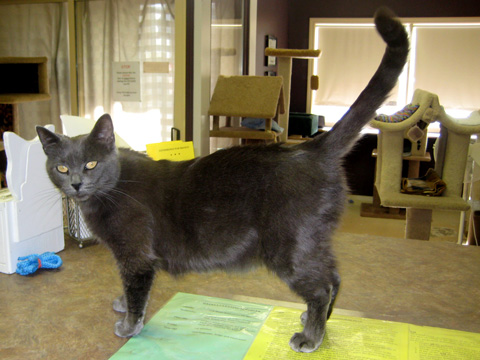Spay & Neuter

What does "spay" and "neuter" really mean?
Female cats are spayed by removing their reproductive organs and male
cats are neutered by removing their testicles. In both cases the operation is performed while the cat is under anaesthesia. Depending on your pet's age, size, and health, he or she will stay at your veterinarian's office for a few hours or overnight. Most clinics now use dissolvable stitches so there is usually no need to revisit if everything heals up well and your cat is back to normal. Your veterinarian can fully explain spay and neuter procedures to you and discuss with you the best age at which to sterilize your pet (usually five and a half to six months of age for a cat). You may qualify for a spay/neuter subsidy - call NOKA: 403-327-6652.
Spaying/Neutering Is Good for Your Pet
-
Spaying and neutering helps cats live longer, healthier lives.
-
Spaying and neutering can eliminate or reduce the incidence of a number of health problems that can be very difficult or expensive to treat.
-
Spaying eliminates the possibility of uterine or ovarian cancer and greatly reduces the incidence of breast cancer, particularly when your pet is spayed before her first estrus cycle.
-
Neutering eliminates testicular cancer and decreases the incidence of prostate disease.
Spaying/Neutering Is Good for You
-
Spaying and neutering can have a calming effect on pets.
-
Neutering cats makes them less likely to spray and mark territory.
-
Spaying a cat eliminates her heat cycle. Estrus lasts an average of six to seven days, several times in a year. Females in heat are uncomfortable. They can cry incessantly, show nervous behaviour, urinate and defecate outside the litter box and attract unwanted males.
-
Unsterilized animals often exhibit more behaviour and temperament problems than do those who have been spayed or neutered.
-
Neutering makes pets less likely to roam the neighbourhood, run away, or get into fights.
Spaying/Neutering is Good for the Community
-
Even smaller communities spend hundreds of thousands of dollars to control unwanted animals.
-
Irresponsible breeding contributes to the problem of overpopulation.
-
Animal shelters are overburdened with "surplus" adoptable animals which are eventually killed.
-
Stray pets and homeless animals get into trash containers, defecate in public areas or on private lawns and frighten or anger people who have no understanding of their misery or needs.
